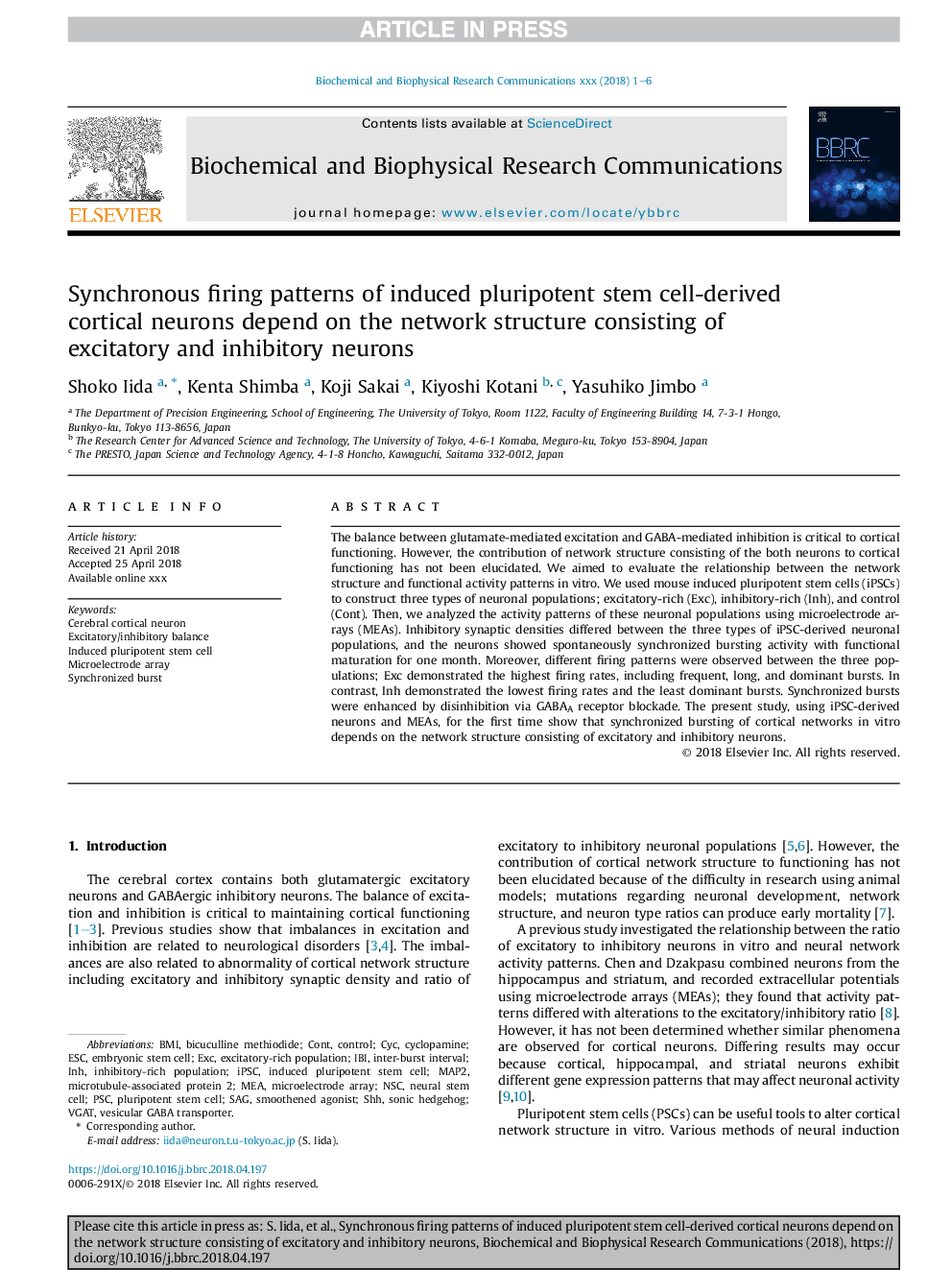| Article ID | Journal | Published Year | Pages | File Type |
|---|---|---|---|---|
| 8292654 | Biochemical and Biophysical Research Communications | 2018 | 6 Pages |
Abstract
The balance between glutamate-mediated excitation and GABA-mediated inhibition is critical to cortical functioning. However, the contribution of network structure consisting of the both neurons to cortical functioning has not been elucidated. We aimed to evaluate the relationship between the network structure and functional activity patterns in vitro. We used mouse induced pluripotent stem cells (iPSCs) to construct three types of neuronal populations; excitatory-rich (Exc), inhibitory-rich (Inh), and control (Cont). Then, we analyzed the activity patterns of these neuronal populations using microelectrode arrays (MEAs). Inhibitory synaptic densities differed between the three types of iPSC-derived neuronal populations, and the neurons showed spontaneously synchronized bursting activity with functional maturation for one month. Moreover, different firing patterns were observed between the three populations; Exc demonstrated the highest firing rates, including frequent, long, and dominant bursts. In contrast, Inh demonstrated the lowest firing rates and the least dominant bursts. Synchronized bursts were enhanced by disinhibition via GABAA receptor blockade. The present study, using iPSC-derived neurons and MEAs, for the first time show that synchronized bursting of cortical networks in vitro depends on the network structure consisting of excitatory and inhibitory neurons.
Keywords
MEACYCMAP2VGATSAGIPSCsmoothened agonistPSCNSCEXCINHmicroelectrode arrayvesicular GABA transporterContESCShhEmbryonic stem cellNeural stem cellPluripotent stem cellInduced pluripotent stem cellcyclopamineBMIsonic hedgehoginter-burst intervalbicuculline methiodideCerebral cortical neuronIBImicrotubule-associated protein 2Control
Related Topics
Life Sciences
Biochemistry, Genetics and Molecular Biology
Biochemistry
Authors
Shoko Iida, Kenta Shimba, Koji Sakai, Kiyoshi Kotani, Yasuhiko Jimbo,
